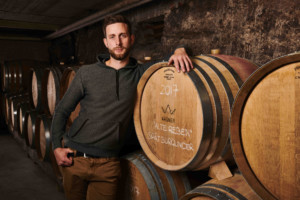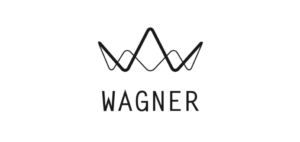Peter Wagner

Peter Wagner
About
Owner & winemaker: Peter Wagner
Vineyards: 8ha, half owned and half rented
Vineyard management: Organic with biodynamic practices, certified from 2023
Soils: Löss, volcanic, tephrite, and calcareous
Grapes grown: Spätburgunder, Chardonnay, Grauburgunder, Weissburgunder, Müller Thurgau
Annual production: 50,000 bottles
Quick facts:
- Peter Wagner is a young, up-and-coming winemaker specializing in sparkling wines and Burgundian varieties.
- Kaiserstuhl is one of the warmest and driest wine regions in Germany, and its soils were formed by an extinct volcano.
- “My inspiration is that every vintage has its different taste, different weather conditions, but the style should be the same every year: pure, fresh, with the taste of Kaiserstuhl.” – Peter Wagner
Peter Wagner’s family has been growing grapes in Kaiserstuhl for five generations, but up until recently, they sold everything to the local coop. Peter Wagner was the first to break the trend, vinifying 0.3 ha of fruit to make 1,500 bottles of wine in 2017. Since then, he’s been able to double production every year, so that by 2022, he was able to reclaim all of the family vineyards from their contracts. He began the conversion to organic farming in 2020 and will be certified in 2023.
Peter is passionate about highlighting the unique terroir of Kaiserstuhl, which is unlike any other in Germany. Found in southern Baden, it’s protected by the Vosges to the west, and the Black Forest to the east, so it’s significantly warmer and drier than the rest of the country’s wine regions. Furthermore, it has volcanic soils, from a volcano that went extinct 14 million years ago. The climate is ideal for ripening Burgundy varieties (and Burgundy itself is only about a three-hour drive southwest).
All wines are fermented to full dryness, and naturally undergo malolactic fermentation, so they can be bottled unfiltered, unfined, and with a minimum of added sulfur. Aging takes place in stainless steel tanks or used oak barriques, with extended contact with the lees. Peter describes his winemaking style as “traditional with a modern orientation.”

